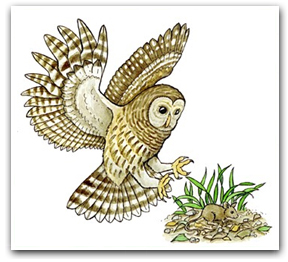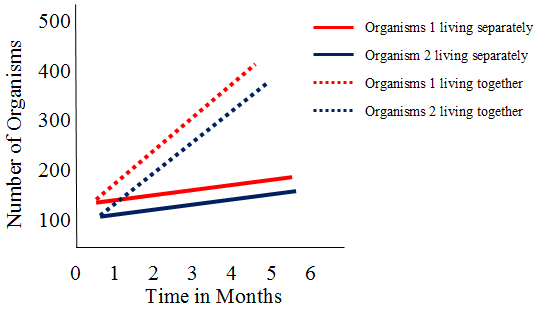
Source: Owl and Mouse, Exploring Nature Educational Resource
The symbiotic relationship between a flower and the insects that feeds on its nectar is an example of . . .
A. Mutualism because the flower provides the insects with food and the insect pollinates the flower.
Correct! This is an example of mutualism.
B. Parasitism because the insect lives off the nectar from the flower.
Incorrect. The insect does live off the nectar from the flower but in parasitism one organism benefits and the other is harmed. The flower is not harmed.
C. Commensalism because the insect does not harm the flower and the flower does not benefit from the relationship.
Incorrect. The flower does benefit from this relationship as it is pollinated by the insects.
D. Predation because the insects feeds on the flower.
Incorrect. The insect does feed on the flower but in predation one organism (the prey) dies.
Mycobacterium leprae is a bacterium that resides in the Schwann cells (part of nerve cells in humans). The bacterium receives nourishment. This bacterium eventually triggers the host to produce an autoimmune attack on the cells that leads to the cell’s destruction. The resulting loss of sensation makes it difficult to avoid injury to the extremities.
A. Mutualism
Incorrect. In mutualism both organisms benefit.
B. Commensalism
Incorrect. In commensalism one organisms is helped and one is unaffected.
C. Predation
Incorrect. In predation one organisms feeds on and kills the other organism.
D. Parasitism
Correct! One organism benefits and the other is harmed.
Which of the following best represents parasitism?
A. As cows walk through grass, insects become active and are seen and eaten by cowbirds.
Incorrect. This is an example of commensalism. The cowbirds benefit by getting food and the cows are unaffected.
B. A tapeworm absorbing the nutrients from the intestine of a dog.
Correct! The tape worm benefits but the dog is harmed.
C. Yucca flowers are pollinated by yucca moths. The moths lay their eggs in the flowers where the larvae hatch and eat some of the developing seeds.
Incorrect. This is mutualism because both organisms benefit.
D. Hermit crabs live in shells made and then abandoned by snails.
Incorrect. This is commensalisms. The hermit crab benefits but the snail is unaffected.
What kind of interaction does the owl have with the mouse?

Source: Owl and Mouse, Exploring Nature Educational Resource
A. Commensalism
Incorrect. In commensalism one organisms benefits and the other is unaffected.
B. Mutualism
Incorrect. In mutualism both organisms benefit.
C. Parasitism
Incorrect. In parasitism one organism lives inside or on another organism and harms it.
D. Predation
Correct! In predation one organisms feeds on and kills the other organism.
Study the graph below. The solid lines shows the number of organisms when the two organisms live separately while the dotted lines shows the number of organisms when the two organisms live together. Tell which type of symbiotic relationship is displayed in the graph.

A. Commensalism
Incorrect. When the organisms are living together the number of both organisms increases. In commensalism one would increase and one would stay the same.
B. Parasitism
Incorrect. When the organisms are living together the number of both organisms increases. In parasitism one would increase and one would decrease.
C. Predation
Incorrect. When the organisms are living together the number of both organisms increases. In a predator prey graph one would increase and one would decrease.
D. Mutualism
Correct! When the organisms are living together the number of both increases. This is mutualism.